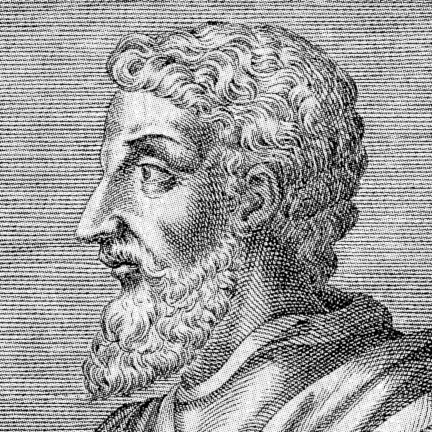Marcus Terentius Varro was a prolific Roman author and polymath. He was described by Petrarch as the third great light of Rome and is sometimes referred to as Varro Reatinus to distinguish him from his younger contemporary, Varro Atacinus. But did you know that Varro studied microbes before the germ theory was developed?
Marcus Varro, a Roman statesman, wrote about germs in 36 BCE, describing them as minor creatures which cannot be seen by the eyes, which enter the body through the mouth and nose and cause serious diseases. The germ theory of disease would only be widely accepted after 1,900 years.
Marcus Varro, the Greatest Scholar
Marcus Terentius Varro was the most outstanding Roman scholar and writer of all time. He is thought to have written 74 separate works in 620 volumes on all aspects of modern learning.
Varro was born into a prosperous family in Rate, Sabine country. He was educated in Rome by L. Aelius Stilo, the first Roman philologist, and he lived in Athens. As a Pompey supporter and against Julius Caesar in the political struggles of the time, he held several public offices in Rome. He carried out other, primarily military, assignments for his leader. During the civil war, he served under Pompey. When he returned to Rome following the victory at Pharsalus in 48 B.C., Caesar pardoned him and commissioned him to establish a public library of Greek and Latin literature.
Following Caesar’s assassination in 44 BC, Mark Antony added Varro’s name to the list of those considered enemies of the state. Even though his villa was looted and his library was destroyed, Varro escaped death thanks to Octavian’s intervention later Augustus. Varro then spent the rest of his life in seclusion, reading, and writing. (Source: Biography)
Marcus Varro’s Knowledge and Wisdom
Varro’s subject matter was diverse, but only a few of his works survived. He wrote 150 books of Menippean satire, a mixture of poetry and prose on a wide range of topics, as well as other comedies, poems, and dramatic works; 41 books titled Antiquities of Things Human and Divine; Annals; City Affairs; On the Nationality of the Roman People, dealing with the origins of the Romans; On the Life of the Roman People, an outline of Roman civilization; Causes, an investigation into Roman customs; and Logistorici, philosophical.
Varro also wrote Civil Law, The Seashore, a geography treatise, meteorology works, and almanacs for farmers and sailors. He wrote books about rhetoric, grammar, poets, poetry, stage equipment, and Plautus, the Roman dramatist. He was the pioneer of the illustrated biography. Portraits contained brief biographical essays on 700 famous Greeks and Romans, as well as likenesses of each.
Varro also wrote about farming, mathematics, and astronomy. His Subjects for Learning outlined a liberal arts curriculum in nine books, including grammar, logic, rhetoric, geometry, arithmetic, astronomy, music, medicine, and architecture. Antiquities contained 25 books on matters human and 16 on matters divine, demonstrating Varro’s vast knowledge of Roman history. It served as a rich information source about the Church Fathers’ official Roman religion. (Source: Biography)
Image from Alasnome
